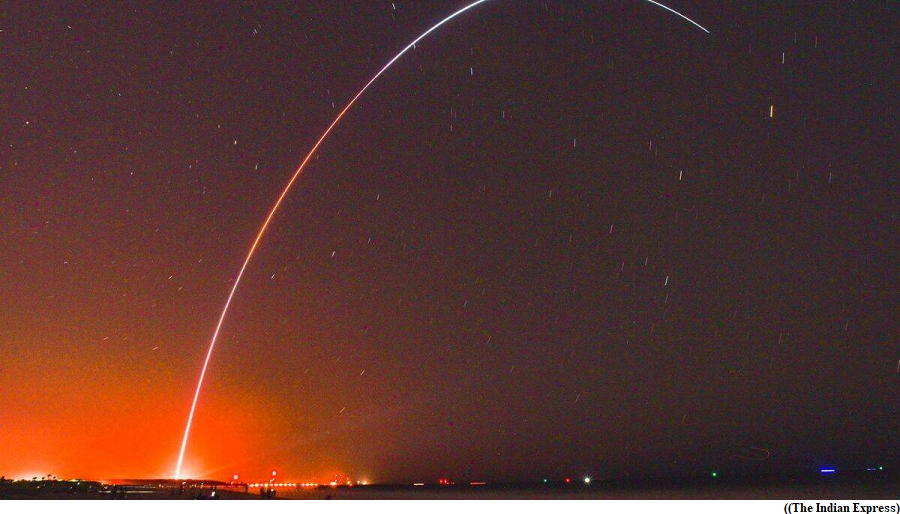India Pixxel bags 5 year deal to provide Hyperspectral imagery to US Reconnaissance Office (GS Paper 3, Science and Tech)

Why in news?
- Indian space tech startup Pixxel Space has bagged a five-year contract from the US National Reconnaissance Office to provide hyperspectral imagery.
Details:
- The NRO awarded six contracts for commercial hyperspectral imagery to BlackSky Technology, HyperSat, Orbital Sidekick, Pixxel, Planet, and Xplore.
- As part of the contract, Pixxel will provide hyperspectral imagery (HSI), remote sensing capabilities via modeling and simulation, and data evaluation.
- The company will use on-orbit pathfinder systems and future HSI constellations to collect and provide the data, which will contribute to world-class intelligence, surveillance, and reconnaissance capabilities.
Hyperspectral images:
- Hyperspectral images are made up of light from hundreds of colors across the electromagnetic spectrum. Since hyperspectral imaging collects many different colors of light, any given object will have a unique signature.
- This enables users to obtain information about each pixel in an image, with the goal of identifying objects and materials. The imagery is used in the fields of agriculture, mining, geology, and intelligence and surveillance.
- Pixel satellites capture images at hundreds of wavelengths in the electromagnetic spectrum and reveal key data about the health of our planet.
About Pixxel:
- Pixxel is an India based private space Technology Company, aiming to put a constellation of 30+ hyperspectral earth observation micro-satellites into a sun-synchronous orbit in 2020s.
- Pixxel launched the first of its three demonstration satellite through a hosted camera payload partnership with the Lithuanian firm, NanoAvionics on 30 June 2021.
- Anand and Shakuntala are a part of the three demonstration satellites that Pixxel planned to launch. It plans to launch the first 6 satellites of its Firefly constellation in 2023 and 12 more by the end of 2024.
Relativity Space said 3D printed metal parts made up 85 percent of the rocket
(GS Paper 3, Science and Tech)
Why in news?
- Recently, Relativity Space successfully launched the world's first 3-D printed rocket into space. However, the mission was not fully successful as it failed to reach orbit. The mission, which was not carrying any form of payload, failed nearly three minutes into the flight.
- The startup is aiming to revolutionise space travel and the satellite launch market with 3D printing replacing the traditional casting of rockets.

Details:
- Relativity launched its third launch attempt of Terran 1, called "GLHF" (Good Luck, Have Fun), from Launch Complex 16 in Cape Canaveral, Florida.
- The company had earlier in March aborted the launch of a rocket made almost entirely from 3D-printed parts minutes before the scheduled lift-off.
- The two-stage, 110 feet tall, 7.5 feet wide, expendable rocket was attempting to launch into Low Earth Orbit from the former missile site.
Key Highlights:
- It was the third launch attempt from what once was a missile site. Relativity Space came within a half-second of blasting off earlier March with the rocket’s engines igniting before abruptly shutting down.
- Most of the 110-foot (33-meter) rocket, including its engines, came out of the company’s huge 3D printers in Long Beach, California.
- 3D-printed metal parts made up 85% of the rocket, named Terran. Larger versions of the rocket will have even more and also be reusable for multiple flights.
3D printing process:
- The 3D-printing process, widely used in various industries, involves machines that autonomously "print" sequential layers of soft, liquid, or powdered materials that are quickly hardened or fused to form solid three-dimensional objects.
- The designs of the objects are scanned from digital blueprints.
Way Forward:
- The startup wanted to put the souvenir into a 125-mile-high (200-kilometer-high) orbit for several days before having it plunge through the atmosphere and burn up along with the upper stage of the rocket.



